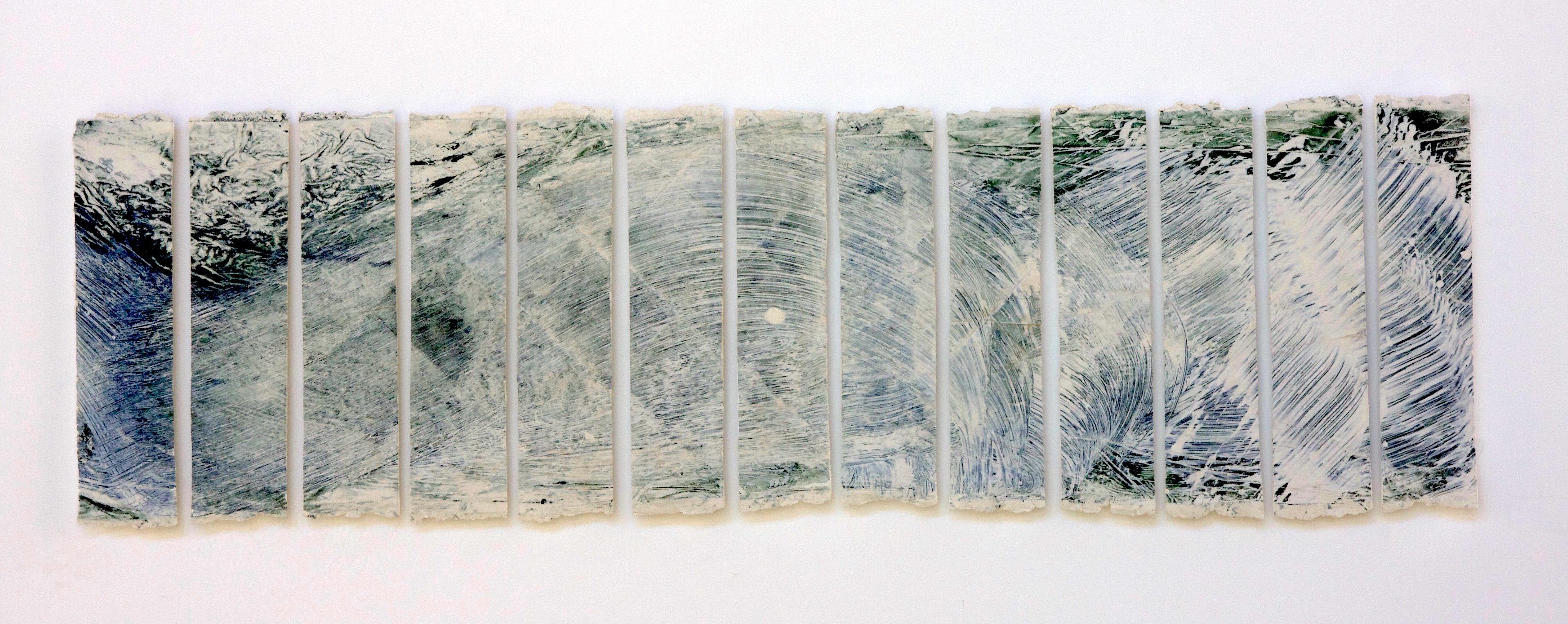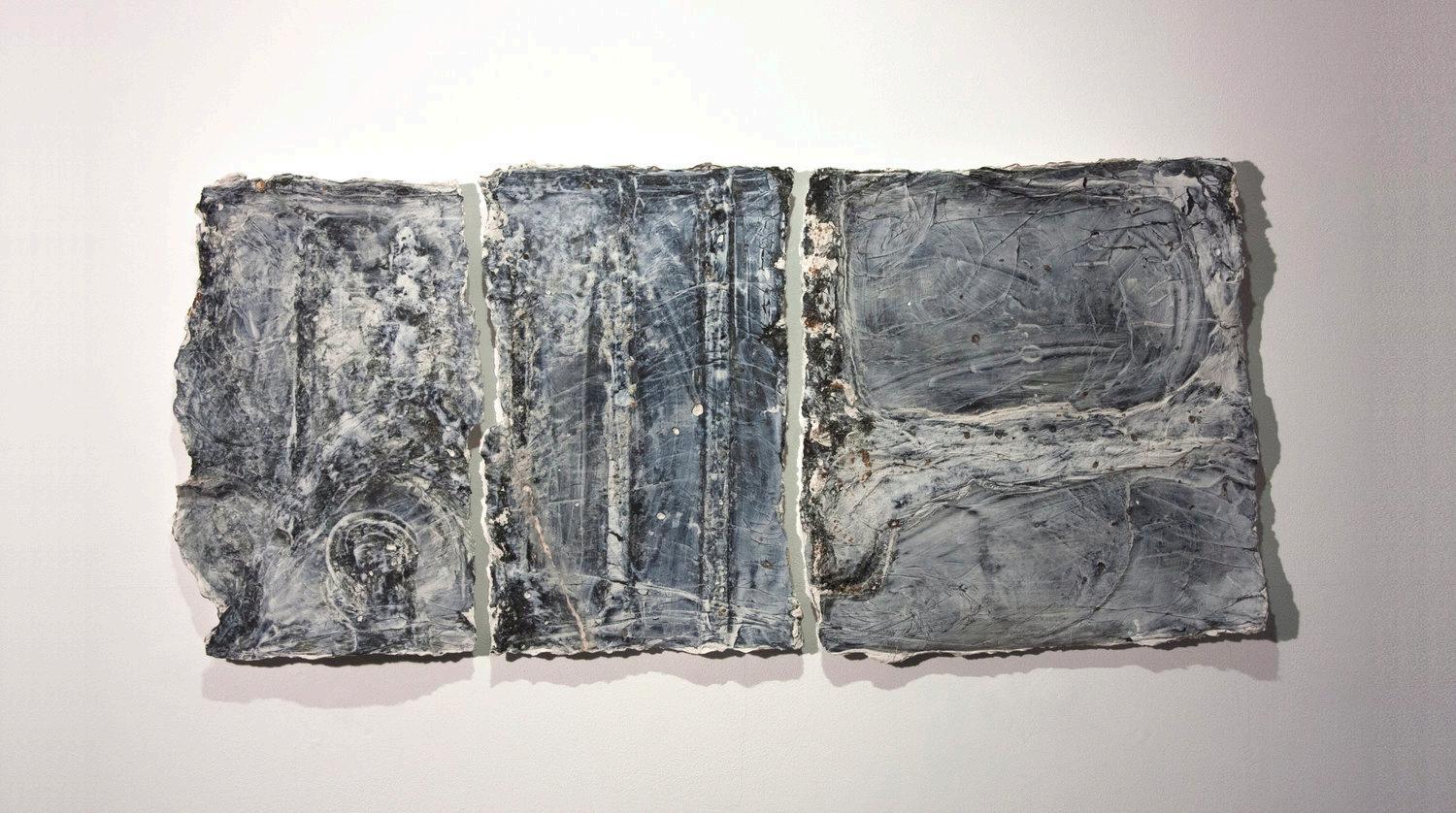
3 minute read
RESEARCH PROCESS AND OUTCOMES
from GALPIN_01
by UWUoA322021
PRACTICE AS RESEARCH A CERAMIC SENSIBILITY: A HAPTIC EXPLORATION OF SPACE
Pippa Galpin, ‘Sweeping the floor’, 2015 Central Hall, Biblioteca Central de Cantabria. Santander, Spain, 2018 14-piece ceramic wall-mounted frieze, height 54cm, width 176cm
Advertisement

Pippa Galpin making while exhibiting at F.O.D.O Westminster Arts Centre, London, 2015
PRACTICE AS RESEARCH A CERAMIC SENSIBILITY: A HAPTIC EXPLORATION OF SPACE
My research process engages with the following research question: can a ‘haptic language’ be applied as an analytical research process, as a way to investigate and perceive a space, and can this operate within but also outside a ceramic context?
My research is an exploration of a space via touch. I use clay to record interactions. Once finished, the pieces are lifted off the original surface (usually a floor) and are wall-mounted where they can be viewed, face on. This move, from the floor to the wall and from the haptic to the visual, can shift the ways in which the original encounter is perceived. The aim is to counteract what the psychologist Jonathan W. Schooler calls ‘verbal overshadowing’, where visual memory or knowledge is displaced when it crosses over to a verbal equivalent.
During this research process I have been exploring the following questions:
• How do ceramic works operate when responding to different spaces? • Do ceramic works speak a similar language to other art forms, in particular to print? • What comparisons between different artforms can be set up to ‘make visible’ a haptic stimulus? • Can what I call a ‘ceramic sensibility’ translate to different artistic mediums?
These questions have led me to make work in response to a series of different spaces and on different space related themes:
- to exhibit ceramic works in fine-art and print exhibitions: - to test out the validity of using visual interpretations alongside tactile or physical explorations when giving talks - to work alongside artists who use a ‘thinking through making’ approach working on the same theme to compile work in a single response to a given stimulus - to work in media other than clay, including the written word.
My methodological approach employs one sense or art form to ‘speak’ about another. It is informed by a broad range of research from the arts, to human geography and psychology.
I have shown that a ‘haptic language’ can be applied as an analytical research process, as a way to investigate and perceive a space, with the resulting ceramic art pieces embodying a ‘haptic memory’. I have discovered that with embodied memory being a contemporary relevant theme explored throughout the arts, the notion of ceramicsand the haptic, and a ‘ceramic sensibility’ can shine an interesting and useful light on this discourse.
An unexpected outcome from this research has been the development of a form of cross-platform working as a way to communicate an experience that might in other circumstances be impoverished if articulated verbally.

The International Ceramics Festival
30th June - 2nd July 2017, Aberystwyth University.
Pippa Galpin
‘Ceramics and the Haptic: a haptic exploration of Worcester Cathedral’
Through examples of ceramic wall-mounted friezes and hands-on demonstrations with clay, this presentation considers the nature of ceramics as a research tool in the exploration of a space.
The hypotheses is that by being built-up and pared back, the physical processes used to make the ceramic friezes reflect the creation of the Cathedral surfaces as they are today.
In other words, the haptic history of action-over-time within the Cathedral space is embodied in and then re-evoked by the clay. This part of the process was responsive to the texture of the floors and preceded the print being lifted and made visual, which is now followed by this verbal interpretation.



